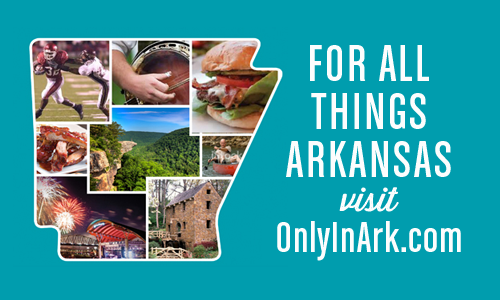Today marks the end of Kindergarten. I remember thinking this day seemed so far away 365 days ago. I was busy anticipating the sadness and stress of my son starting kindergarten and what we still had to do to be socially and scholarly prepared. I was not full prepared to use my summer before kindergarten to get him ready for school success.
So, last summer, I did a few intentional things to prepare my son for kindergarten and ensure we made intentional memories in our last summer “at home” together. And we thrived. I will forever look back on last summer as a sweet spot in my parenting. My son has always been my buddy, but last summer, we took that to the next level because a 5-year-old can do so much more than our earlier preschool years.
Even now, as I get a little nervous about what the next three months will hold, I’m equally anticipatory for slower mornings and fun days and his expectation for continued learning and “cool things” that his incredible teacher does every day. I really do have a lot to live up to.

So, what did we do last summer to create fun memories and prepare for kindergarten?
- Set a routine – this one helped all of us – but setting expectations about our mornings, timers, being responsive when I ask to do something, and how much tech time we have each day. We even had specific things we did on certain days – so it might mean Monday is a home day for reset or our activities, Tuesday or Wednesday is library day, Thursday is a fun outing, and Friday we meet a friend to jump. This helped with the transition to “specials” at school, and when he woke up and said, “What are we doing today,” I could say well, what do we do on Mondays. Then, it wasn’t a “no” to what he wanted to do; that just happened on Tuesdays.
- Use theme weeks to create summer fun. At school, they have “units” and themes, so having shark week, bug week, and beach fun week helped me plan activities to survive summer. The thrill of how that theme would manifest a new adventure or craft was really fun for him!
- Practice for lunchtime – I should have started with this. One of my friends who has had four kids go to kindergarten said one of the biggest adjustments is lunchtime. They have a shorter time to eat new foods in a loud environment! I know that really overwhelmed me too. So, when we would eat out or go on a picnic, I started planning foods that would be in his lunch box and talked to him about how he would do things differently in the cafeteria. I tried hard to start this conversation in June, so it was more of a “guess what cool thing you get to do at school” versus the stress of “you’ve got to learn this in the next two weeks because everything is about to change.”
- Time lunches – especially once we hit July, I knew he had 20 minutes to eat and throw away his trash. He still had to finish his lunch, but the timer let him see how fast the time had gone. We also talked a lot about protein foods and junk foods, how to look at his plate, and how to eat the protein first, then fruit and vegetables, and then whatever else. I knew if the timer at lunch went quickly, I wanted to make sure he had his protein or “main” thing consumed first. Did that mean it stuck? Nope. Did that mean some days at school, he only had gummies or chips? Yep. But learning what foods are full of protein helped him make a better decision most days!
- Eat at the mall food court – this was the other recommendation my friend with multiple kids offered. We often just took a sack lunch or, one day a month, got to pick up food at the mall. But, this was a public place that was easy to be in a noisy and busy environment for a lunch experience. I would always set that timer and let him see how fast it would go—reminding him that he would have to stop eating and throw away what was left at school. I knew I wouldn’t be there to help him regulate, so he had to develop those skills to take care of himself. This and timed lunches were big game changers for our preparation for kindergarten success!
- Make sure they can open a zipper bag or their snacks – whether you buy slider bags or fold-over bags, knowing they can manage whatever packaging you are sending snacks or lunchboxes will help them actually get to eat. Often, in the first months of school, teachers or aids will walk around to help them get their items open to eat, but waiting their turn takes valuable eating time. Or, we would have teachers come open everything, and then anything he didn’t eat, he had to throw away because it was opened. So, working on those pincher skills and getting them where they can open their sandwich bags, cheese its bags, twist off pouches, or gummies are essential to lunch room success.
- Figure out what matters to them about school supplies – do they care about a backpack or lunch box, what kind of folders, etc? Make an outing in July and pick up some school supplies once you have a supply list. You don’t have to wait until August to do this part; make it a summer day outing. Or, help them see backpacks, etc, that you want to consider when you are out at other sites and help them “get an idea” of what they may wish to. And add school supplies to grocery delivery – that was the easy way for me, especially this first year when everything is so new and fundamental.
- Practice getting in and out of their car seat – we could do walk-in, but many schools are a drive-thru line drop-off only. To do this, your kid needs to be able to open their buckle and door to get out of the car. Drive up to the school and practice. The same applies if they are riding the bus. Walk through the steps and processes of where they will go and how they will get back home so they build their confidence and have fewer worries about the little things.
- Make a bracelet together or a keychain—this was a fun thing we did the week before school to help us connect on those first few hard mornings. We used the friendship bracelet concept to make a letter bracelet that we could hold in our hearts when we missed each other. It was an easy transition, a fun craft project, and a way to have something big that was just kept between us for the occasion.
- Spend time together – if you’ve been at home with your kiddo since birth, this is a big transition time for everyone. I knew sweetness and sadness would co-exist. So, last summer, I just spent a lot of time doing things we like to do together. At five and pre-kindergarten, there are not many day camps available to them, so you have to make your own fun. And I am determined to take advantage of this and have fun. He felt too big for “little preschool” things. Still, many places don’t include kids until rising first graders, mainly because they’ve not had the classroom experience of listening, taking direction, and learning from a teacher dynamic with other kids around.
I also used our car time together and these practice lunches to talk to him and create the space for mom-and-son conversation. I’d ask him what he was most excited about doing this week, about the friends he was making, what excited him about school, and what made him nervous. This information helped inform how we spent our days and helped us know what we needed to work on together.
- Do an academic review – I practiced letters, numbers, and counting as we did things out and about. I knew we needed to know all our letters and introductory letter sounds. He could count to 10, but we would practice counting from the front seat to the back seat. We would count trees on a trail. We would count signs when we passed them. But, recognition of colors, numbers, and letters will make them more successful in their first days of kindergarten.
- Have fun – enjoy your summer together! You cannot get this time back, so just be present and spend your days together in your favorite ways.

BONUS – Here are some fun and educational activities you can do with your child this summer:
- Read together every day. Reading is one of the most important things you can do to prepare your child for kindergarten. It helps them develop their vocabulary, comprehension skills, and love of learning. Make reading a fun experience by choosing books that interest your child and letting them read to you.
- Visit your local library. Libraries offer a wealth of resources for children, including books, story times, and summer reading programs. Take your child to the library regularly to explore all it offers.
- Practice counting and essential math skills. Help your child learn to count to 100 and recognize numbers. You can also play games that involve simple addition and subtraction.
- Encourage creativity. Give your child opportunities to express creativity through art, music, and imaginative play.
- Get outdoors and explore. Spend time in nature with your child. Go for walks, visit parks, and play in the backyard.
- Visit museums and zoos. These places offer a fun and educational way for children to learn about the world around them.
- Have playdates with other children. Social interaction is important for children’s development. Could you arrange playdates with other children who will be starting kindergarten in the fall?
- Talk to your child about starting school. Discuss what they can expect and answer any questions they have. This will help them feel more prepared and excited about starting kindergarten.
While preparing them for school is important, focusing on fun activities that allow them to relax and enjoy their childhood is equally essential. Here are some ideas for fun things you can do with your child this summer:
- Plan a picnic in the park. Pack a delicious lunch, bring a frisbee or a ball, and enjoy a leisurely afternoon in the park. Let your child run, play, and explore their surroundings.
- Have a water balloon fight. Cool off on a hot summer day with a water balloon fight in the backyard. It’s a fun and active way to beat the heat and create laughter-filled memories.
- Go on a nature scavenger hunt. Create a list of things for your child to find in nature, such as different leaves, rocks, or insects. This activity encourages observation skills and a love for the outdoors.
- Build a fort. Use blankets, pillows, and furniture to create a cozy living room or backyard fort. This imaginative play activity sparks creativity and provides a sense of adventure.
- Have a movie night. Pop popcorn, snuggle on the couch, and watch a family-friendly movie together. This creates a cozy bonding experience and allows for relaxation.
- Visit a local amusement park or water park. Spend a day riding rides, splashing in the water, and enjoying the excitement of an amusement park or water park. This is sure to be a memorable experience for your child.
- Go camping in the backyard. Set up a tent, roast marshmallows, and tell stories under the stars. This is a fun way to introduce your child to the wonders of camping and create a sense of adventure.
- Bake cookies or cupcakes together. Let your child help you measure ingredients, mix the batter, and decorate the treats. This is a fun way to introduce them to cooking and create delicious memories.
- Have a dance party. Put on some upbeat music and dance around the house with your child. This is a great way to get active, have fun, and let loose.
- Visit a local farm or petting zoo. Let your child interact with animals, learn about farm life, and enjoy the outdoors. This is an educational and enjoyable experience for children of all ages.
And don’t miss my list of tips for surviving summer!
Remember, the most important thing is to have fun and enjoy this particular time with your child before they embark on their kindergarten adventure. By focusing on fun activities, you’ll create lasting memories and help them transition smoothly into their new school routine.
The summer before your child starts kindergarten is an exciting time of anticipation and preparation. It’s a time to make memories and help your child prepare for this new chapter in their life. Don’t be scared or sad every day. They are getting pumped for this latest milestone. Join them and learn how your relationship grows with new opportunities with an early elementary kiddo. Welcome to the club!!!









